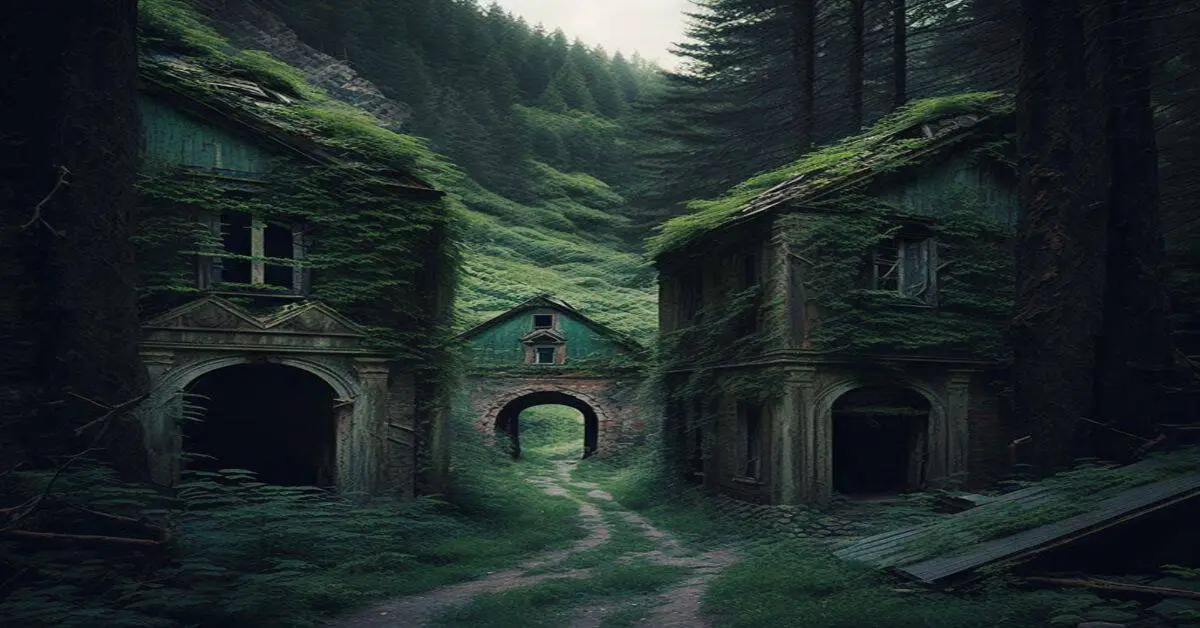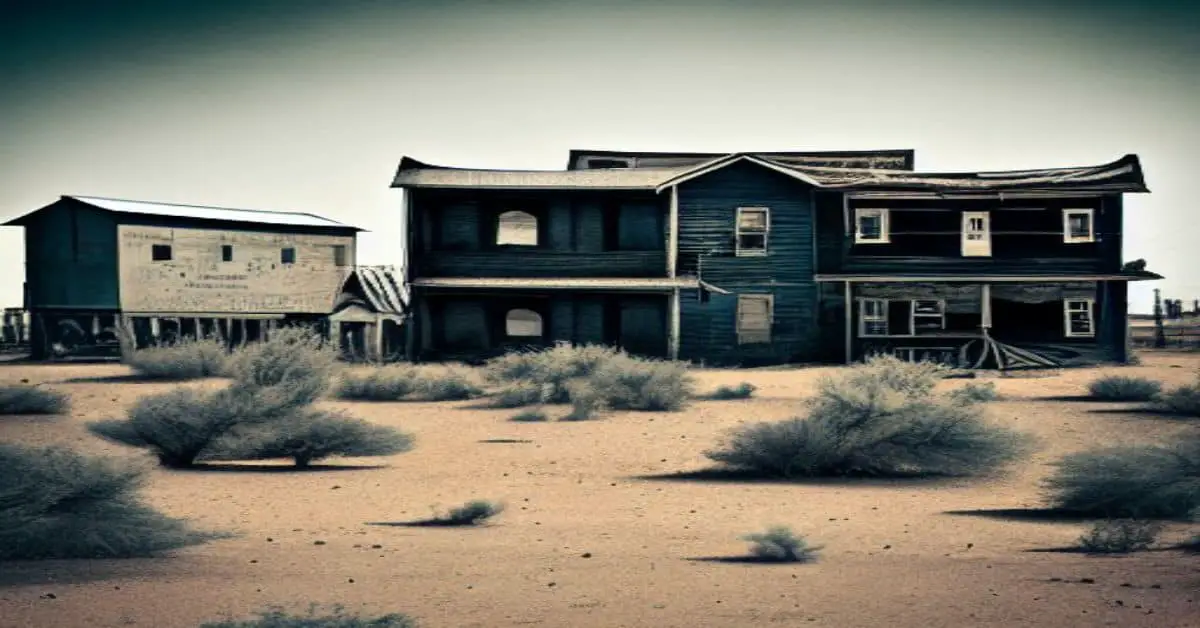As the saying goes, ‘time marches on,’ and with it, the evolution of communities. This evolution is evident in Teller County, Colorado, in the various ghost towns that dot the landscape. These abandoned settlements were once bustling communities, but they were left to decay and crumble for many reasons.
Today, these ghost towns provide a glimpse into the past and offer a unique opportunity to explore the remnants of a bygone era. Located in the heart of Colorado, Teller County boasts a rich history intertwined with the discovery of gold and silver in the late 1800s. As settlers flocked to the area in search of riches, towns sprang up seemingly overnight, each with its own unique character and charm.
However, as resources dwindled and the economy shifted, many of these once-thriving communities were abandoned, leaving only remnants of their former glory. Despite their eerie and desolate appearance, these ghost towns have become popular attractions for tourists and history buffs.
In this article, we will delve into the history of Teller County’s ghost towns, explore the reasons for their abandonment, and examine the efforts made to preserve these relics of the past.
Key Takeaways
- Teller County, Colorado, has several ghost towns that offer a glimpse into the past and attract tourists and history buffs.
- Many once-thriving communities were abandoned due to dwindling resources and economic shifts, providing insight into the economic, social, and cultural changes.
- Preservation and tourism play significant roles in abandoned settlements’ cultural and economic value, as seen in restored and preserved ghost towns like St. Elmo and Victor.
- Ghost towns can significantly impact the local economy by generating revenue for nearby businesses, making their preservation and promotion beneficial for communities.
Location and History
Regarding the ghost towns in Teller County, Colorado, it is important to note that their location and history can provide valuable insight into how communities have changed over time.
Teller County is located in central Colorado and was once a booming mining area, with towns springing up around the mines. However, as the mines began to close and the mineral resources were depleted, the towns were abandoned and left to decay.
Exploring the ruins of these forgotten communities can provide a glimpse into the past and the economic, social, and cultural changes that have occurred.
The ghost towns in Teller County are a testament to the mining boom of the past but also to the resilience and adaptability of the communities that once thrived there. The towns were often built in harsh, remote environments, and the people there faced many challenges.
By exploring these towns’ ruins, visitors can understand the hardships and successes of the people who lived there and how their legacy has influenced the region today.
Teller County’s ghost towns are a valuable resource for historians, archaeologists, and anyone interested in learning about the history of Colorado and the United States.
Reasons for Abandonment
The abandonment of settlements can occur for various reasons, with economic decline being a significant factor in the decline of 90% of ghost towns in Colorado. In Teller County, many ghost towns were established during the gold rush in the late 1800s. However, as the gold supply dwindled, the mines closed and the towns lost their economic base.
The Great Depression also significantly impacted Teller County, leading to the abandonment of many towns. Exploring ruins in Teller County can provide insight into the economic factors that led to the abandonment of these settlements. The ruins of once-thriving businesses and homes serve as a reminder of the economic struggles of the past.
While some ghost towns have been preserved as historical sites, many have been left to decay over time, highlighting the challenges of sustaining a community without a viable economic base. Ultimately, understanding the reasons for abandonment can help us appreciate the resilience of communities that have survived economic downturns and the importance of maintaining a diverse economic base for long-term sustainability.
Preservation and Tourism
Preservation and tourism play significant roles in abandoned settlements’ cultural and economic value. For ghost towns, conservation efforts are particularly crucial, ensuring these historic sites remain intact and accessible for future generations. Preservation efforts may include stabilization of buildings, archaeological surveys, and educational programs that promote the significance of these sites.
Teller County, Colorado, is home to several ghost towns that have been restored and preserved, such as St. Elmo and Victor. These towns have become popular tourist destinations, drawing visitors interested in exploring the region’s history. In addition to their cultural value, ghost towns can significantly impact the local economy. By drawing in tourists, these abandoned settlements can generate revenue for nearby businesses, such as restaurants, hotels, and souvenir shops.
In Teller County, ghost towns have become an essential part of the tourism industry, with visitors coming from all over the world to explore the historic sites. The economic impact of these visitors can be significant, providing jobs and income for residents. Overall, preserving and promoting ghost towns can have cultural and economic benefits for communities, making them valuable resources for the future.
Frequently Asked Questions
What were the primary industries of the ghost towns in Teller County before they were abandoned?
The primary industries of Teller County’s ghost towns before abandonment are unknown. Abandoned structures have been subject to preservation efforts. Economic impact is often the reason for a town’s decline.
Are there any ghost towns in Teller County that have been completely restored to their original condition?
There are no ghost towns restored to their original condition in Teller County, Colorado. However, some abandoned settlements have been preserved as historical sites and are popular tourist attractions, offering opportunities for tourism in the county.
What kind of artifacts and historical items can be found in the ghost towns of Teller County?
Exploring artifacts and uncovering history is integral to understanding the significance of ghost towns in Teller County. Examining the stories and lore associated with these abandoned settlements can shed light on the mysteries of the past.
Have any famous historical figures or events taken place in the ghost towns of Teller County?
Teller County’s ghost towns have not been associated with any famous historical figures or events. However, exploring these settlements may uncover forgotten stories of notable individuals and provide insight into the region’s past.
Are there any ghost towns in Teller County rumored to be haunted or have paranormal activity?
Several ghost towns in Teller County have local legends of paranormal activity. Paranormal investigations have been conducted in towns such as St. Elmo and Victor, with reports of ghostly sightings and unexplained phenomena.


